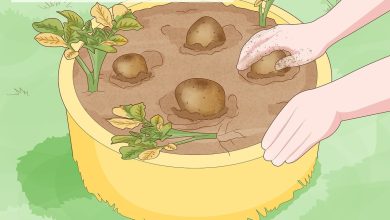How to dry hydrangeas without losing color


Extending the life of flowers in an attempt to capture their beauty beyond time is inherent in any flower lover. And if, of all of us, we consider how to dry hydrangeas, we are in luck. Because although with other flowers we can get frustrated, in the case of this wonderful representative of acid plants we have it easy. The hydrangea dries well and, what is better, it is long-lived even dry.
Beyond the fact that the drying process is simple, there is another reason that makes it the ideal candidate. In addition to the attractiveness of their flower arrangements, these shade shrubs come in an incredible variety of colors. Some that range from white to blue, passing through lilac, fuchsia or pastel pink. A detail that allows us to play with them in the decoration of our house, according to our tastes or the tonalities that we have in it.
So let’s see how to dry hydrangeas step by step in order to enjoy them for longer. A way to turn a fleeting memory into one that resists time.
WAYS TO DRY HORTENSIAS WITHOUT LOSING COLOR
Although we are clear about how to dry flowers, how to dry hydrangeas has its own peculiarities. To begin with, because we are talking about a flower that, in reality, is a sum of flowers. A detail thanks to which the inflorescence of the hydrangea has that pompous appearance that is so characteristic and, at the same time, so attractive. That is why knowing how to dry hydrangeas depends, to a large extent, on respecting their natural form.

In addition to this, there is something important that we should know. No matter how well we dry them, our hydrangeas will never maintain their fresh color intensity. A detail that we must consider and that does not detract from the beauty of how they will be dry. But do not get frustrated: even if they are not exactly the same, there are tricks to try to preserve their essence as much as possible. It is also important to know that, over time, the color they have once they are dry will fade and fade.
So apart from how to dry hydrangeas, what can we do to preserve the tones? Simple: start drying our flowers at the right time. And, in this case, there are two possible scenarios:
- Flowers taken from the plant itself: it is essential to cut them when they begin to dry on the plant itself. Doing it before that happens will make the flowers wilt and mushy, so they won’t dry properly. Cutting them when the flowers are already very advanced will cause them to lose all their color in the drying process.
- Flowers from a bouquet: since they are already cut, the sooner we start the process, the better they will dry.

Whether we cut the flower from the bush or from a bouquet, it is interesting to opt for long stems. With these details in mind, let’s see how to dry hydrangeas in two different ways.
1. How to dry hydrangeas in a vase without water
It is one of the simplest and most common methods. The system is as basic as leaving our flower stem in a vase without water. If we opt for this drying, we can leave the leaves on the stems.
Although it is the easiest method to dry hydrangeas, you have to know that the flowers may not keep their usual shape since they tend to wrinkle. They also tend to lose color and even lean forward as they dehydrate.
2. Drying hydrangeas in a vase with water
Another of the easiest ways. If we opt for this method, it is important to remove all the leaves from the stems. The idea is that our flower stem gradually dehydrates, and progressively.
Unlike the previous one, in this case we will keep a few fingers of water and place the vase in a dark and cool place, where the flowers do not receive direct sunlight. The time to remove them will be when the water has completely disappeared. Another way to know that our hydrangeas are completely dry is to lightly touch their leaves. If they have a papery texture, drying is complete.
To keep our dried flowers longer, we can spray them with lacquer from a distance to prevent them from being damaged.

3. Air drying hydrangeas
It is the most efficient way to dry hydrangeas if we want to maintain the characteristic feathery appearance of the bouquets. It is also ideal for red, fuchsia or reddish hydrangeas as it maintains its color very well.
As in the previous method, we will remove the leaves before starting the process. Once this is done, we will keep it hanging upside down in a cool, dry space without sunlight, maintaining a separation between stems to favor ventilation. After two weeks, our flowers will have that papery texture that we mentioned.
To top it off, a lacquer bath will extend the life of our dried flower.
Do you dare to dry hydrangeas? Tell us!



![Photo of Weevil: [Characteristics, Detection, Effects and Treatment]](https://www.complete-gardening.com/wp-content/uploads/2021/06/Que-es-el-picudo-390x220.jpg)
